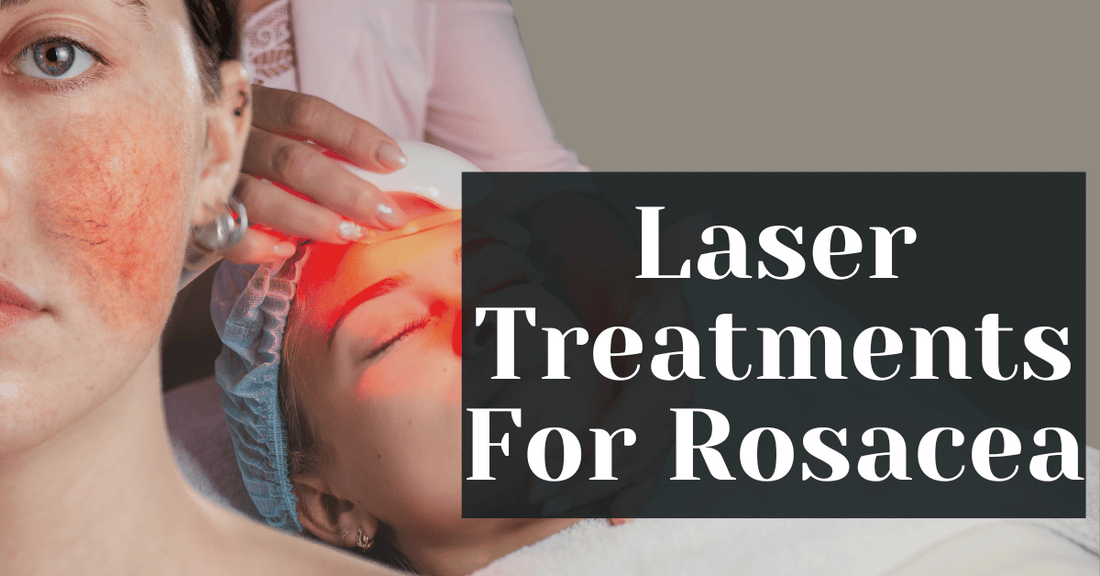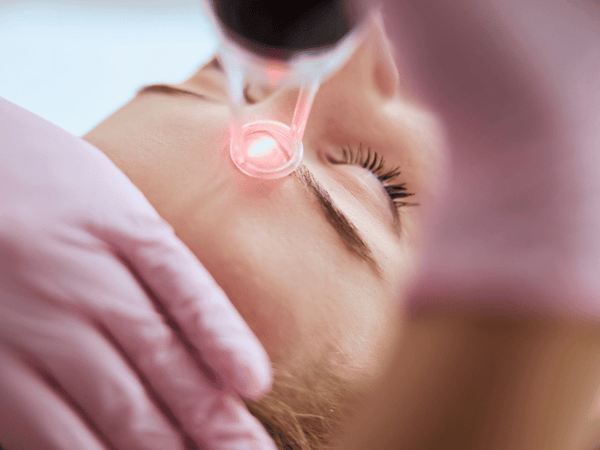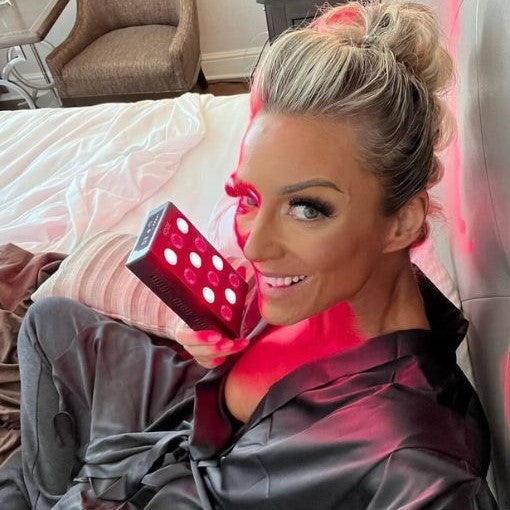
Laser Treatments For Rosacea
Rosacea is a chronic skin condition that affects millions of people worldwide. Characterized by redness, swelling, and the need to treat visible blood vessels, rosacea can cause significant discomfort and affect one's self-esteem. While there is no cure for rosacea, advancements in dermatological treatments have provided effective ways to manage its symptoms.
Among these, laser treatments have emerged as a popular and promising option for reducing the appearance of rosacea and improving skin health.
In this comprehensive guide, we will explore the ins and outs of laser treatments for rosacea, from understanding the condition itself to the post-treatment care and recovery process.
Whether you're considering laser therapy or simply seeking more information, this article aims to provide you with a deep understanding of how laser treatments can help manage rosacea.
Understanding Rosacea

Rosacea is more than just a cosmetic concern; it's a complex skin condition that can vary in severity and symptoms. It typically affects the face, causing redness, swelling, and sometimes pimples or bumps. The exact cause of rosacea is unknown, but it's believed to be a combination of genetic and environmental factors.
Common triggers that can worsen symptoms include sun exposure, hot weather, stress, spicy foods, and alcohol.
The symptoms of rosacea can be classified into medical conditions, with three treatments per common symptom and four main types:
1. Erythematotelangiectatic Rosacea (ETR): Characterized by flushing and persistent redness on the cheeks, nose, chin, or forehead.
2. Papulopustular Rosacea: Involves redness, swelling, and acne-like breakouts.
3. Phymatous Rosacea: causes thickened skin and develops a bumpy texture, often affecting the nose, and the thickening skin tightens the nose.
4. Ocular Rosacea: Affects the eyes, leading to redness, irritation, and swollen eyelids.
The Role of Laser Treatments in Managing Rosacea

Laser treatments have become a cornerstone in the management of rosacea, offering a non-invasive solution to reduce the visible symptoms of this condition.
The primary goal of laser therapy is to target and diminish the dilated blood vessels and redness associated with rosacea, resulting in a more even and clearer complexion.
Types of Lasers Used for Rosacea Treatment:
1. Intense Pulsed Light (IPL): Although intense pulsed light therapy is not a laser in the strictest sense, IPL is frequently used to treat rosacea. It emits a broad spectrum of light that targets the red pigment in blood vessels, helping to reduce redness and flushing visible blood vessels.
2. Pulsed Dye Laser (PDL): pulsed dye laser therapy emits a concentrated beam of light that is absorbed by the blood vessels in the skin, causing them to collapse and fade. It's particularly effective for treating persistent facial redness, and visible blood vessels.
3. Nd:YAG Laser: This type of laser treatment can penetrate deeper into the skin, making it suitable for treating more severe cases of rosacea in patients with prominent blood vessels.
Benefits of Laser Treatments for Rosacea:
-
Reduction of Redness: Laser therapy can significantly diminish the appearance of redness and flushing on the skin.
-
Minimizing Blood Vessels: Lasers target the enlarged blood vessels, causing them to shrink and become less visible.
-
Improving Skin Texture: Over time, laser treatments can help improve the overall texture of the skin, making it smoother and more even.
-
Long-Term Results: With a series of treatments, the results of laser therapy can be long-lasting, providing ongoing relief from rosacea symptoms.
Preparing for Laser Treatment

Before undergoing laser treatment for rosacea, it's essential to have a thorough consultation with a qualified dermatologist. This consultation will help your doctor determine if laser therapy for rosacea is the right option for you and what you can expect from the laser treatment for rosacea.
Here are some steps to prepare for your laser treatment:
1. Consultation with a Dermatologist:
-
Discuss your medical history, including any previous skin treatments and medications you're currently taking.
-
Your dermatologist will examine your skin and assess the severity of your rosacea to determine the most suitable laser treatment.
2. Pre-Treatment Skin Care Routine:
-
Follow any specific skin care instructions provided by your dermatologist, such as avoiding certain products or medications that may increase skin sensitivity.
-
Protect your skin from sun exposure by applying a broad-spectrum sunscreen daily. Sunburned or tanned skin can affect the efficacy of the laser treatment.
3. What to Disclose to Your Dermatologist:
-
Inform your dermatologist about any medications, supplements, or herbal remedies you are taking, as some substances can affect your skin's reaction to the laser.
-
Discuss any concerns or questions you have about the treatment, including potential side effects and recovery time.
Preparing for the Day of Treatment:
-
Avoid using any harsh skin care products or exfoliants for a few days before the treatment.
-
Do not apply makeup, lotion, or perfume on the day of your treatment.
-
Wear comfortable clothing that allows easy access to the treatment area.
The Laser Treatment Process

Undergoing laser treatment for rosacea is a straightforward process, typically performed in a dermatologist's office or a specialized skin clinic.
Here's what you can expect during the laser treatment for rosacea:
1. Pre-Treatment Preparation:
-
Your skin will be cleaned to remove any oils, makeup, or debris.
-
A cooling gel may be applied to the treatment area to enhance comfort and protect the skin.
-
To safeguard your eyes from the laser light, the practitioner and you will both be wearing protective eyewear.
2. The Treatment:
-
The laser device is adjusted to the appropriate settings based on your skin type and the severity of your rosacea.
-
The practitioner will pass the laser handpiece over the affected areas of your skin, delivering targeted pulses of light.
-
You may feel a sensation similar to a rubber band snapping against your skin or a warm tingling. Most patients find this tolerable, but your practitioner can adjust the settings or use a cooling device to enhance comfort.
3. Duration and Frequency:
-
The length of each treatment session varies based on the size of the treatment region, usually lasting between 15 and 30 minutes.
-
Multiple sessions are often required for optimal results. The exact number of treatments will depend on your individual condition and response to the therapy.
-
In order to give the skin time to heal and react to the therapy, sessions are often scheduled four to six weeks apart.
4. Post-Treatment:
-
After the treatment, the practitioner may apply a soothing gel or cream to the treated area.
-
You may experience some redness, swelling, or mild discomfort immediately following the procedure, but these side effects are usually temporary.
Post-Treatment Care and Recovery

After undergoing laser treatment for rosacea, it's crucial to follow a proper post-treatment care routine to ensure optimal results and minimize any potential side effects.
Here are some guidelines for post-treatment care treat rosacea:
1. Immediate Aftercare:
-
Apply a cold compress or cooling gel to the treated area to reduce any redness, swelling, or discomfort.
-
Avoid touching or scratching the treated area to prevent irritation or infection.
2. Skin Care Routine:
-
Keep the treated area clean and moisturized. Use a gentle, non-irritating cleanser and a fragrance-free moisturizer.
-
Avoid using harsh or abrasive skincare products, such as exfoliants or retinoids, for a few days after the treatment.
3. Sun Protection:
-
Protect your skin from sun exposure by wearing a broad-spectrum sunscreen with an SPF of 30 or higher. Sun exposure can exacerbate rosacea symptoms and interfere with the healing process.
-
Wear a wide-brimmed hat and seek shade when outdoors to further shield your skin from harmful UV rays.
4. Managing Side Effects:
-
Mild redness, swelling, and discomfort are common side effects after laser treatment and usually subside within a few days.
-
If you experience any severe or persistent side effects, such as blistering, infection, or changes in skin color, contact your dermatologist immediately.
5. Follow-Up Appointments:
-
Attend any scheduled follow-up appointments with your dermatologist to monitor your progress and discuss any concerns.
-
Your dermatologist may adjust your treatment plan based on your response to the initial sessions.
How Red Light Therapy Can Help with Rosacea

Red light therapy is a non-invasive treatment that uses low-level wavelengths of red light to promote healing and improve skin conditions, including rosacea. While different from laser treatments, red light therapy offers patients a gentle alternative to lasers for those seeking relief from the symptoms of rosacea.
Here's how red light therapy can be beneficial for rosacea patients:
1. Reducing Inflammation: Red light therapy has anti-inflammatory properties, which can help reduce the swelling and redness associated with light skin along with rosacea. By calming inflammation, red light therapy can alleviate some of the discomfort, increased redness, and other visible signs of the condition.
2. Enhancing Skin Healing: The light wavelengths used in red light therapy penetrate the skin and stimulate cellular activity. This can promote the healing of damaged skin and improve the overall health and appearance of the skin affected by rosacea.
3. Improving Skin Barrier Function: Rosacea can weaken the skin's natural barrier, making it more susceptible to irritation and environmental factors. Red light therapy can help strengthen the skin's barrier, reducing sensitivity and preventing flare-ups.
4. Safe for Sensitive Skin: Unlike some other treatments, red light therapy is gentle and generally well-tolerated by those with sensitive skin, making it a suitable option of light treatment for individuals with rosacea.
5. Complementary Treatment: Red light therapy can be used in conjunction with other rosacea treatments, such as topical medications or lifestyle changes, to enhance overall results.
Disclaimer: It's important to note that while red light therapy can offer benefits for rosacea, it may not be suitable for everyone. Consult with a dermatologist or skincare professional to determine if red light therapy is an appropriate option for your specific condition and to discuss a comprehensive treatment plan for managing rosacea.
Conclusion
Rosacea is a challenging skin condition that affects millions of people worldwide. While there is no cure, treatments like laser therapy and red light therapy offer hope for managing symptoms and improving skin appearance.
Laser treatments, with their ability to target and reduce visible blood vessels and redness in darker skin, have become a popular option for those seeking relief from rosacea. Additionally, red light therapy provides a gentle alternative that can help reduce inflammation and promote skin healing.
It's essential to consult with a dermatologist to determine the most appropriate treatment plan for your specific type of rosacea. With the right approach, it's possible to achieve significant improvements in your skin's health and appearance, boosting your confidence and quality of life.
If you have any questions or concerns about rosacea or its treatments, don't hesitate to reach out to a healthcare professional for guidance and support.
Thank you for reading, and we hope this article has provided you with valuable insights into managing rosacea with laser and red light therapies.